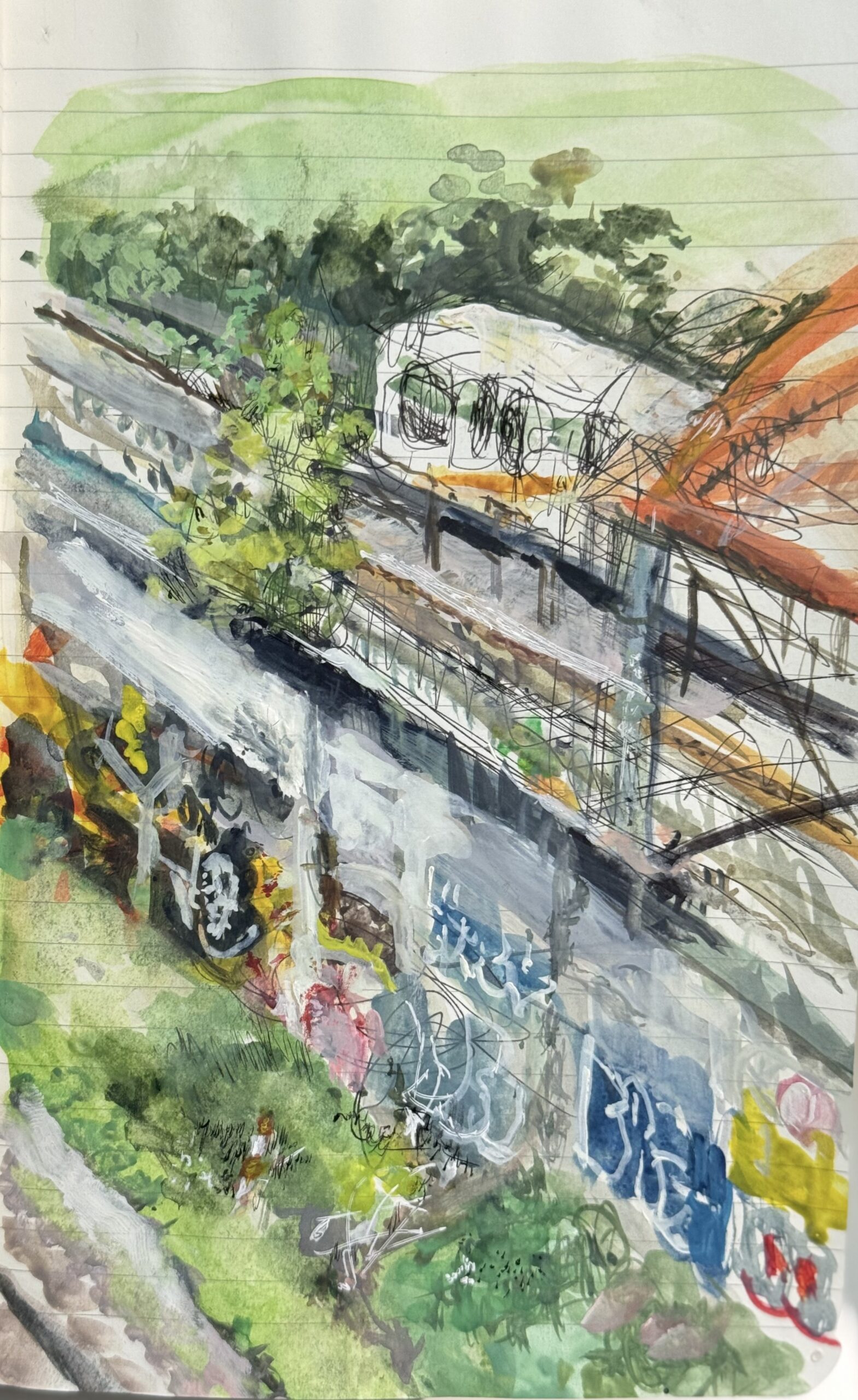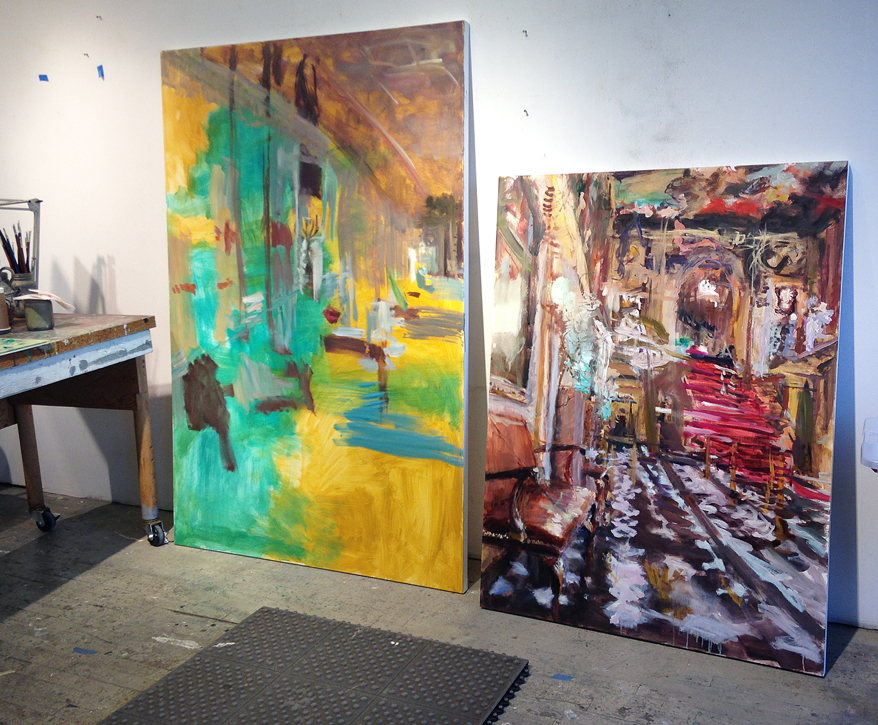For the past 15 years, I’ve painted opulent European 18th and 19th century interiors. Designed as theatrical displays of status and power by wealthy aristocrats and bourgeoisie, these formerly private sites are now museums, providing entertainment and pleasure for touristic consumption, while also opening up a space for philosophical contemplation.
Although I use photography as a structural device through which I enter the painting process, with each piece I always seem to arrive at a point of crisis where I need to break free from the tyranny of the image. Through partly destroying the image I discover fresh solutions to painterly problems I set for myself.
Throughout my childhood and into my mid-twenties, I was a ballet dancer. That intense training of spatial awareness and interpretive questioning is still deeply stamped in my DNA. A painting to me is a kind of choreography; there’s a haptic dance that takes place from my optical experience of an image, through to the way my nervous system signals to my body how to translate and record it. As painter/dancer I tease out meaning through working and reworking, coming up to speed as I gain understanding, and making the last strikes with absolute commitment.





